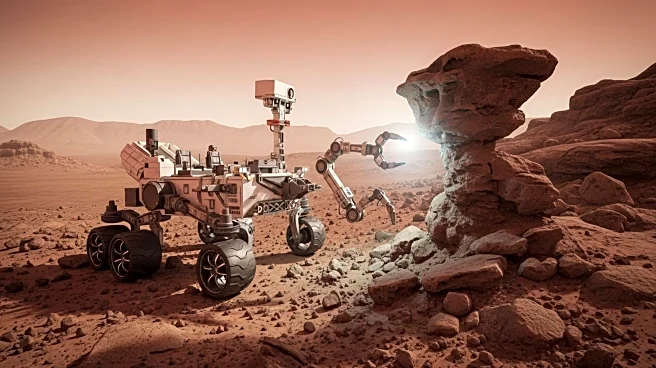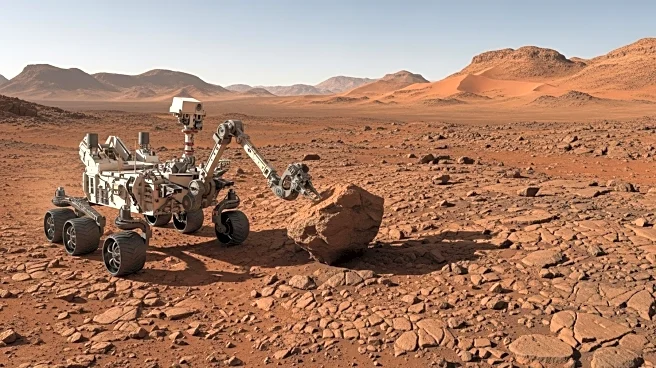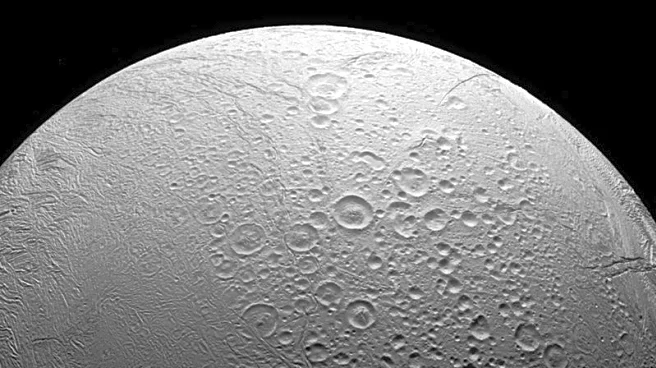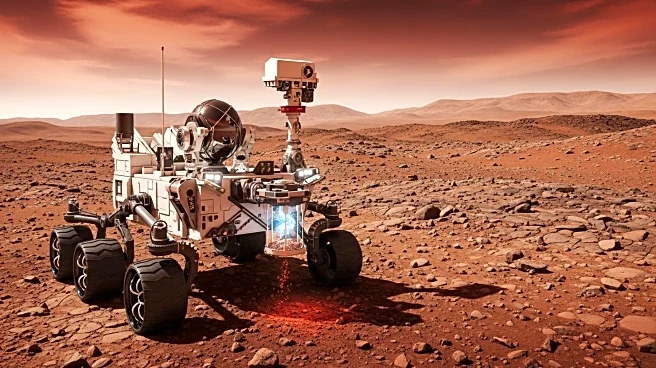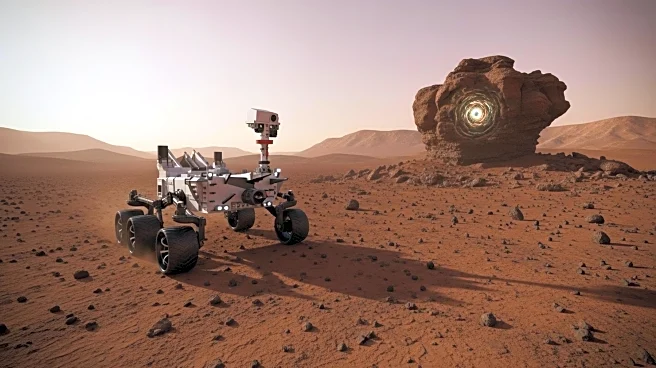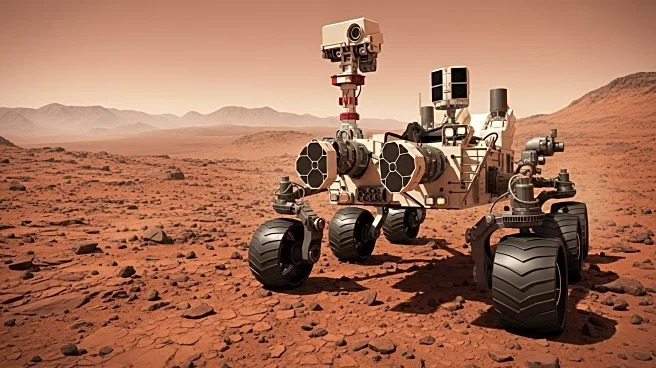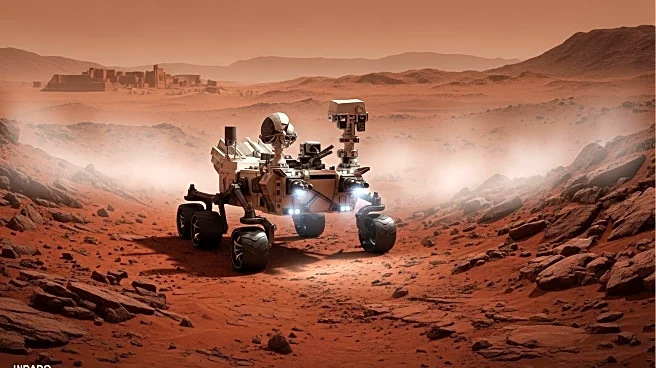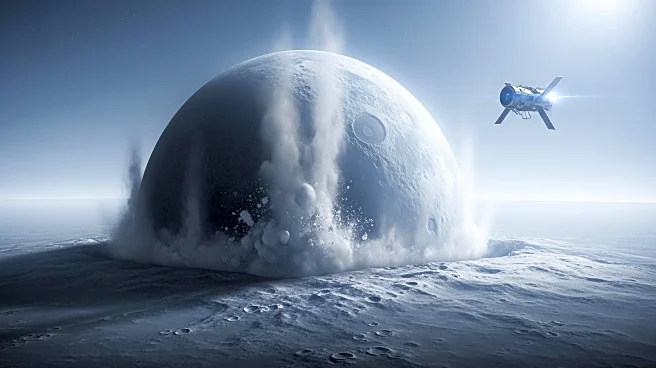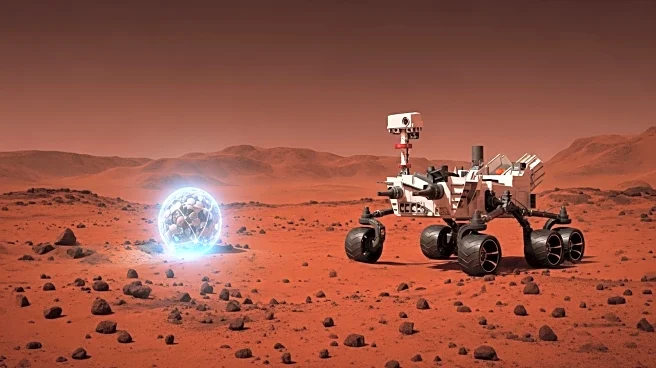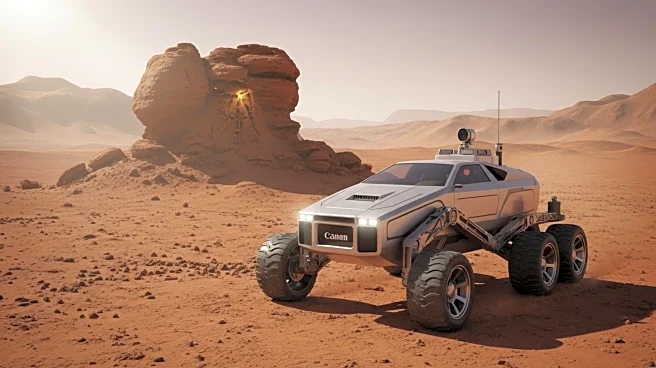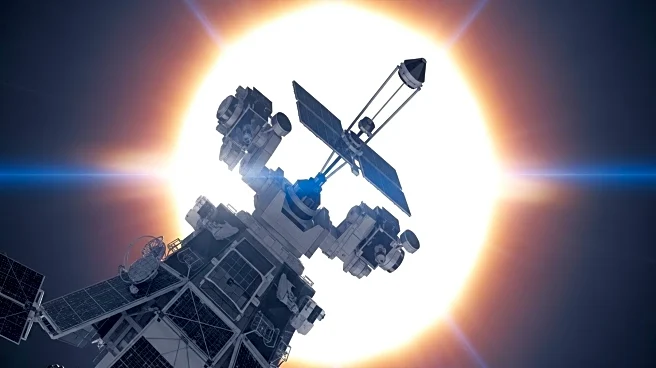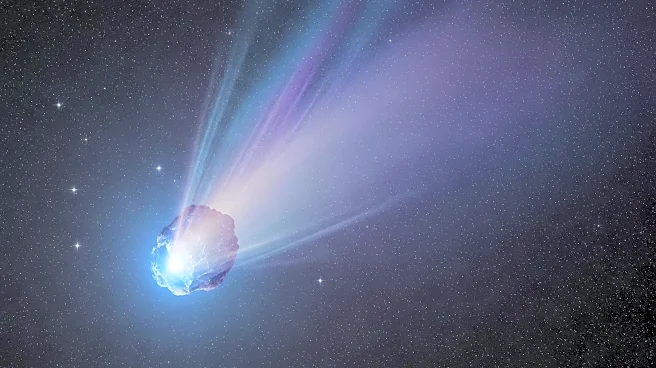What is the story about?
What's Happening?
NASA's Curiosity rover has made a significant discovery on Mars by detecting the largest organic compounds ever found on the planet's surface. These compounds, identified as long-chain hydrocarbons such as decane, undecane, and dodecane, were discovered in a rock sample from Gale Crater. The finding is notable because these alkanes, while not fatty acids, are similar to biological lipids found on Earth. The discovery was made in a site known as Yellowknife Bay, which is believed to be the remains of an ancient lake. This area has previously shown evidence of clay minerals, sulfur, nitrates, and episodic methane, all of which are considered indicators of past habitability. The detection of these long-chain hydrocarbons suggests that Mars had the chemical complexity and persistent water necessary for prebiotic processes.
Why It's Important?
The discovery of these large organic molecules on Mars is crucial as it provides further evidence of the planet's potential to have supported life in the past. The presence of such compounds indicates that Mars had the necessary conditions for chemical processes that could lead to life, similar to those on Earth. This finding narrows down the search for life on Mars by highlighting specific areas and conditions that are more likely to have supported life. The results also emphasize the importance of a Mars Sample Return mission, which could allow for more detailed analysis of these compounds on Earth, potentially confirming their biological origin. This discovery could have significant implications for our understanding of life's potential beyond Earth, influencing future Mars exploration missions and the search for extraterrestrial life.
What's Next?
The next steps involve further analysis and exploration to determine the origin of these organic compounds. NASA scientists stress the need for a Mars Sample Return mission to conduct isotope-ratio and molecular-structure tests that could confirm whether these compounds are biosignatures. Until such a mission is possible, Curiosity's findings will guide future exploration efforts, focusing on areas with similar conditions that might harbor signs of past life. The scientific community will likely continue to analyze data from Curiosity and other Mars missions to refine their understanding of the planet's habitability and the potential for life.
AI Generated Content
Do you find this article useful?
